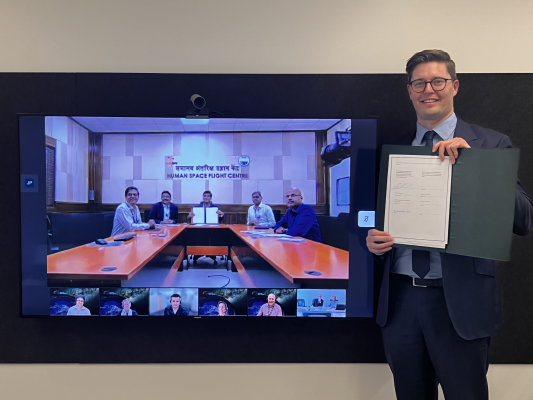Australia has formalised its support of India’s historic Gaganyaan missions, with the signing of a new agreement.
The Implementation Arrangement between the Indian Space Research Organisation (ISRO) and Australian Space Agency will allow the agencies to work together on crew and crew module recovery.
The Gaganyaan Human Spaceflight programme aims to demonstrate human spaceflight capability to Low Earth Orbit in an Indian Crew Module. It will see up to three crew members go into orbit for up to three days, before safely recovering them after the mission.
Should any of the uncrewed or crewed missions need to be aborted following launch from India, the Crew Module is likely to land in the Southern Ocean, in Australian waters.
The Australian Government has agreed to work with Indian authorities to ensure the safe recovery of the Gaganyaan Crew Nodule and support crew search and rescue activity.
Australia and India are enduring strategic partners in space with both agencies committed to exploring further collaboration opportunities.
This cooperation was highlighted by Prime Ministers Albanese and Modi during the second Australia-India Annual Summit this week.
“The Prime Ministers welcomed the growing space partnership between the two countries, both at space agency and space industry levels. Cooperation to support the Gaganyaan missions, the planned launch of Australian satellites on-board an Indian launch vehicle in 2026 and joint projects between our respective space industries exemplify this deepening collaboration."
~ Joint Leader’s Statement – 2nd Australia-India Annual Summit

International Partnerships
Working together towards a common goal
Main image: Australian Space Agency's General Manager, Space Capability and representatives from the Indian Space Research Organisation (ISRO) with the signed Implementation Arrangement.

